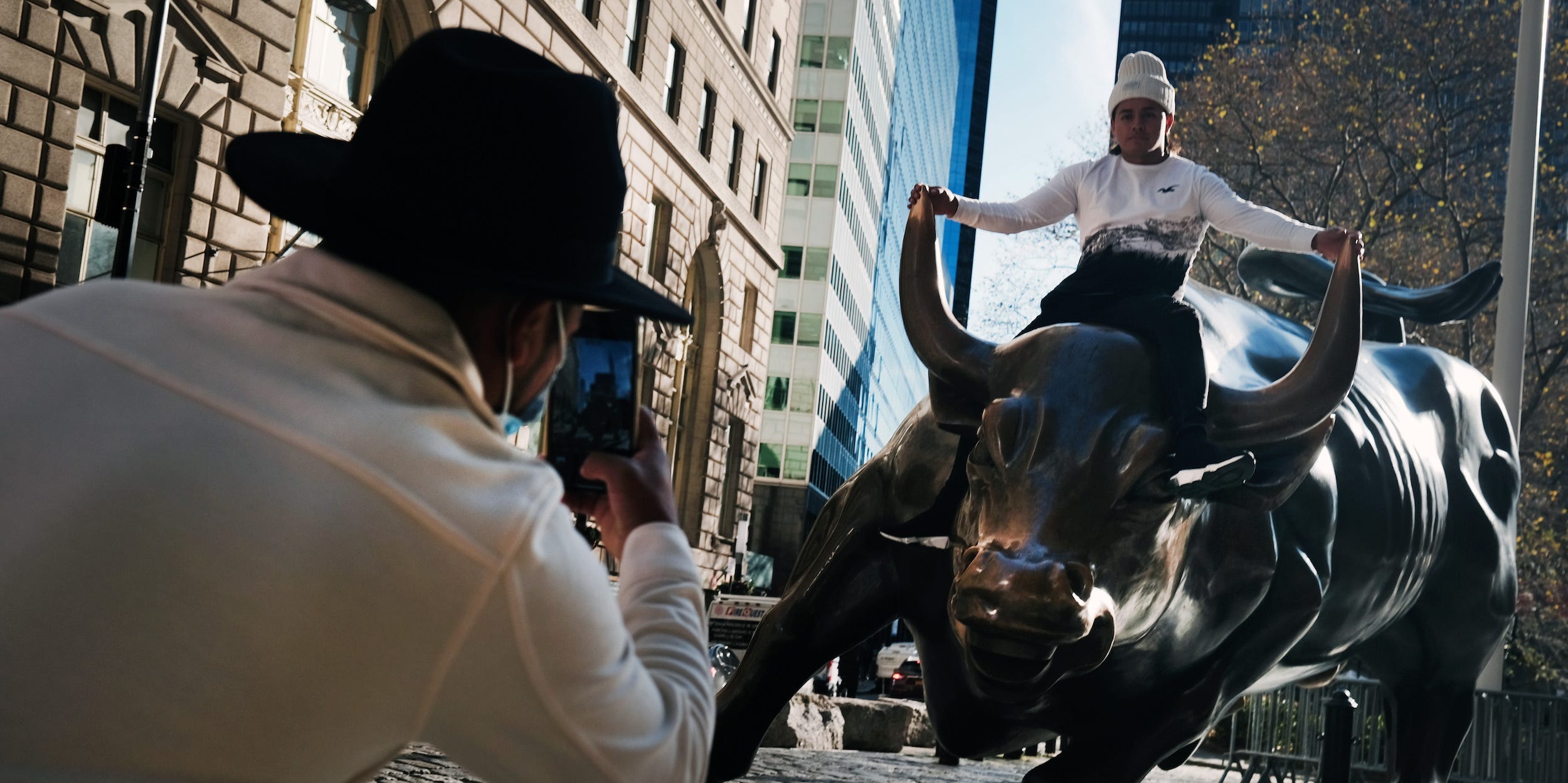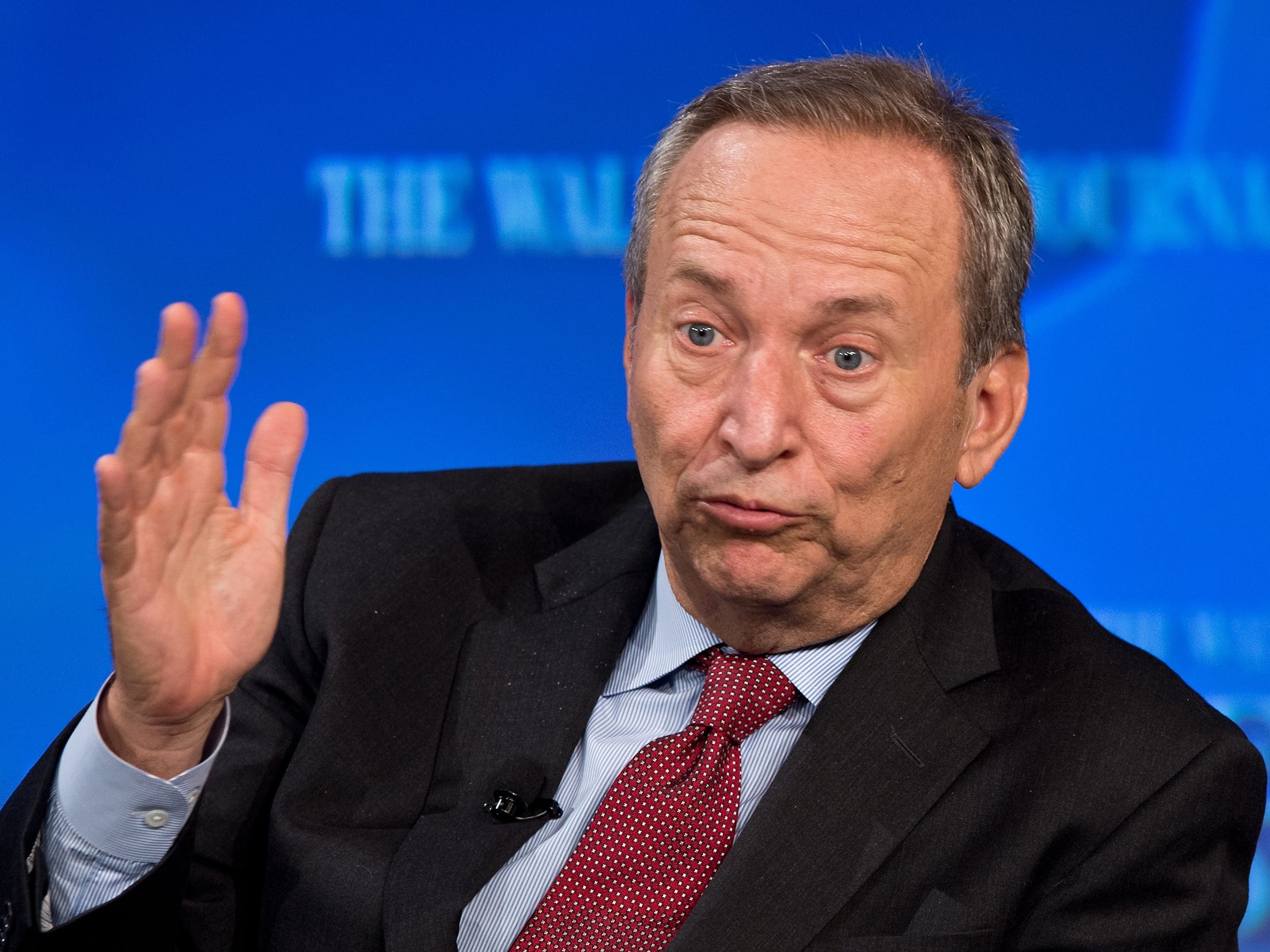
Spencer Platt/Getty Images
- Older investors and younger investors have vastly different inflation expectations amid new stimulus.
- Those who lived through the "Great Inflation" fear price growth will run rampant, Deutsche Bank said.
- A material rise in inflation likely depends on younger Americans bracing for higher prices.
- See more stories on Insider's business page.
Older investors are looking at Democrats' $1.9 trillion stimulus package with concern. Memories of the 1970s and that period's stifling inflation loom large. The fear is that a revival in such strong price growth would threaten the still-incomplete economic recovery.
But younger generations have rarely seen inflation reach the Federal Reserve's 2% target.
Inflation expectations, while volatile, play a critical role in economic growth. Businesses and workers look to such forecasts when deciding how to raise prices or wages. This ends up guiding real price growth down the road.
While expectations have varied across age groups for much of the past decade, the gap is now the widest it's ever been, signaling older and younger Americans are bracing for vastly different economic recoveries. If the gap expands even further, key forecasts of economic growth could become useless.
Investors age 55 and older are currently expecting inflation will rise to roughly 2.75%, the highest expected level since 2014. To contrast, those aged between 18 and 34 see price growth reaching about 2.3%.
This gap could have everything to do with the older cohort living through the "Great Inflation," a period between the mid-1960s and the early 1980s when inflation surged and interest rates hit historic highs. Studies of experience-based adaptive expectations suggest living through those years "could cast a long shadow in the setting of inflation expectations," the Deutsche Bank team led by Matthew Luzzetti wrote this week in a note to clients.
Boomer economists being haunted by the Great Inflation they lived through explains why some are hesitant about the massive stimulus package. A more pronounced climb in expectations and real inflation might then rely on those who have only known decades of weak price growth, according to the bank.
"With memories of the Great Inflation possibly already lifting inflation expectations for older age groups today, a more material drift higher in expectations likely would require a lift from the younger age groups," the economists said.
The inflation age gap
Historical data shine a light on just how the current age-inflation divergence came to be.
Inflation peaked in 1975 at 10.1%. While it's true that it fell the following year to 5.9%, the Great Inflation lived up to its name in 1981 as it shot back up to 9.6%. In the wake of this era, younger investors from that period have since held much higher inflation expectations, research shows.
Former Fed Reserve chair Paul Volcker presided over the crushing of interest rates during the 1980s, when he reversed the central bank's previous policies, focusing on money supply instead of interest rates. The country then entered an age of below-target price growth as a result, and economists and central bankers paid close attention long afterward to any tick upward. Now younger investors with none of that experience have entered the market.
"There's a generation of both people and economic analysts who never experienced the monster that Volcker slayed," Jared Bernstein, senior fellow at the Center on Budget and Policy Priorities and former chief economist to President Joe Biden during the Obama administration, told The Washington Post.
Six out of 10 working Americans haven't experienced inflation over 4%, WaPo reported. In the past 20 years alone, inflation hasn't exceeded 2.5%.
Those who have experienced less inflation in their lifetime will have lower inflation expectations than those who lived during a high inflationary period, according to a 2013 economic analysis of responses to the University of Michigan's ongoing monthly survey of consumer sentiments, which tracks Americans' price-growth forecasts.
The age gap could be skewing some of the country's most popular inflation-expectation gauges today. The university's latest data from March shows the gap in inflation expectations between the youngest and oldest age groups rose to a level tied for a record high, per Deutsche Bank. The survey is driven by respondents who lived during the Great Inflation, according to Deutsche Bank.
Data from the university's survey shows the distribution of both age groups' expectations trending lower, suggesting the age gap may soon narrow and pull average expectations lower. Should that trend continue, younger investors' weaker expectations could prevail over older Americans' informed concerns.
A "more material" uptrend in inflation, therefore, depends on a lift from younger Americans, Deutsche Bank said.
"These groups should thus be closely watched as actual inflation experiences a sharp, even if temporary, spike in the coming months," the economists added.
Guiding the recovery
In the early months of the Biden administration, the risk of inflation has become a major source of debate.
Lawrence Summers, former treasury secretary for Bill Clinton and economic adviser to Barack Obama, wrote in an early February op-ed for The Washington Post that Biden's $1.9 trillion stimulus might cause "inflationary pressures of a kind we have not seen in a generation."
Summers told Insider in February that zero interest rates were once "dismissed" as unrealistic and yet now they are in place, "and I think people who dismiss the possibility of significant increases in inflation today are making a similar error."
Olivier Blanchard, former chief economist at the IMF, agreed with Summers on Twitter, writing that the package could "overheat the economy so badly as to be counterproductive." A few weeks later, Blanchard defended his concerns in an article for the Petersen Institute, a nonpartisan think tank.
Biden and current Treasury Secretary Janet Yellen have dismissed such inflationary concerns, saying that the stimulus brings a low risk of long-term inflation and the US now has tools it didn't have back in the 1980s to address inflation if it does occur. Fed Chair Jerome Powell, breaking with the boomer orthodoxy, has also said any uptick in inflation from the stimulus will be small and temporary.
It could act as the first step in lifting millennials out of their affordability crisis, marked by two recessions before the age of 40, staggering student-loan debt, and a broken economy inherited from boomers.

NICHOLAS KAMM/Getty Images
But by trying to prevent inflation that might not even arrive, boomer economists may hinder the younger generation's economic recovery. Their expectations for high inflation could become a self-fulfilling prophecy.
Investors won't have to wait long for the next hint at future inflation, either. The Federal Open Market Committee meets on Tuesday and Wednesday to discuss policy adjustments and publish a new set of quarterly projections. The central bank's last forecasts saw inflation trending below 2% through 2023. Yet those projections were made before President Donald Trump passed a $900 billion stimulus plan.
Since then, Biden has signed his own relief package into law and the US has begun to make significant progress in containing the virus. Those developments all stand to lift the Fed's latest expectations.
The updated forecasts may also provide new hints at when the central bank will lift interest rates. The Fed has indicated it will keep ultra-easy monetary policy in place until inflation steadily trends above 2%.
Investors haven't been buying it. Traders dumped Treasury bonds throughout February and March in anticipation of strong economic growth - and a jump in inflation.
In other words, the boomers' fears of the Great Inflation are still haunting the recovery.